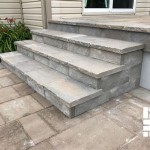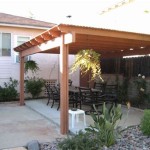Outdoor Flagstone Patio Ideas For Beginners
Creating an outdoor flagstone patio can transform a backyard into a beautiful and functional living space. Flagstone, a naturally occurring sedimentary rock, offers a unique aesthetic appeal with its irregular shapes, varied colors, and textural surfaces. While the process might seem daunting, especially for beginners, breaking down the project into manageable steps simplifies the installation. This article provides a comprehensive guide to outdoor flagstone patio ideas for beginners, covering essential planning, material selection, and installation techniques.
Planning and Design Considerations
Before embarking on the physical installation, meticulous planning is crucial. The initial phase involves assessing the available space, determining the desired patio size and shape, and considering the overall landscape design. A well-thought-out plan ensures a seamless integration with the existing environment and prevents costly mistakes further down the line.
Start by measuring the area where the patio will be located. This measurement helps determine the quantity of materials needed and ensures the patio fits comfortably within the available space. Use stakes and string to outline the proposed patio perimeter, allowing for visual assessment and adjustments as needed. Consider the patio's proximity to the house, walkways, garden beds, and other landscape features. The goal is to create a cohesive and harmonious design that complements the existing environment.
The shape of the patio can significantly impact its aesthetic appeal and functionality. While rectangular or square patios are straightforward to design and install, irregular shapes can add visual interest and create a more natural look. Consider the intended use of the patio when determining its shape. A rectangular patio might be ideal for dining, while a circular patio could be suitable for a fire pit area.
Drainage is a critical consideration. Ensure the patio is slightly sloped away from the house to prevent water from pooling on the surface. A slope of approximately 1/4 inch per foot is typically sufficient for adequate drainage. Consider the existing drainage patterns in the yard and make adjustments as necessary to ensure proper water runoff. Poor drainage can lead to water damage, erosion, and the growth of mold and mildew.
Finally, consider the overall design aesthetic. The style of the patio should complement the style of the house and the surrounding landscape. Consider the color, texture, and pattern of the flagstone, as well as the materials used for edging and pathways. Gather inspiration from magazines, websites, and local gardens to develop a design that reflects personal preferences and enhances the beauty of the outdoor space.
Selecting the Right Flagstone and Materials
Choosing the right flagstone is essential for achieving the desired look and durability. Flagstone comes in various types, colors, and thicknesses, each with its own unique characteristics. Understanding these variations helps in selecting the most suitable flagstone for the specific patio project.
Common types of flagstone include sandstone, slate, limestone, and quartzite. Sandstone is a popular choice due to its durability, affordability, and wide range of colors. Slate is known for its smooth, fine-grained texture and dark, elegant appearance. Limestone offers a more rustic look with its porous surface and earthy tones. Quartzite is a highly durable and heat-resistant option, making it ideal for areas with high foot traffic or exposure to extreme temperatures.
The color of the flagstone should complement the surrounding landscape and the house's exterior. Consider the color of the siding, roofing, and other landscape features when making a selection. Neutral colors such as gray, brown, and beige are versatile and can blend well with various design styles. However, bolder colors such as red, blue, and green can add visual interest and create a unique focal point.
The thickness of the flagstone is another important consideration. For patios, a thickness of 1 to 2 inches is generally recommended. Thicker flagstones are more durable and less likely to crack or break under heavy use. However, they are also heavier and more difficult to work with. Consider the intended use of the patio and the expected foot traffic when determining the appropriate thickness. Areas with heavy furniture or frequent use may require thicker flagstones.
In addition to flagstone, other materials are needed for the patio installation, including base materials such as gravel and sand, edging materials such as paver stones or metal edging, and jointing materials such as polymeric sand or mortar. Gravel is used to create a stable base for the patio, providing drainage and preventing settling. Sand is used to level the surface and provide a cushion for the flagstones. Edging materials help to contain the patio and prevent the flagstones from shifting. Jointing materials fill the gaps between the flagstones, preventing weeds from growing and providing a finished look.
Step-by-Step Installation Guide
The actual installation process involves several key steps, including excavation, base preparation, flagstone placement, and jointing. Each step requires careful attention to detail to ensure a successful and long-lasting patio.
The first step is excavation. Remove the existing sod and topsoil from the patio area to a depth of approximately 6 to 8 inches. Use a shovel and wheelbarrow to remove the excavated material. Ensure the excavated area is level and compacted. This step provides a stable foundation for the base materials.
Next, install the gravel base. Spread a layer of gravel, approximately 4 to 6 inches thick, over the excavated area. Use a rake to distribute the gravel evenly. Compact the gravel using a plate compactor or hand tamper. Compacting the gravel ensures a stable and level base for the patio. Add more gravel as needed to achieve the desired thickness and level.
After the gravel base is prepared, add a layer of sand. Spread a layer of sand, approximately 1 to 2 inches thick, over the gravel base. Use a rake to distribute the sand evenly. Level the sand using a screed board or a long, straight board. The sand layer provides a smooth and even surface for the flagstones to rest on. Compact the sand using a hand tamper if necessary.
Now the flagstones can be placed. Begin by arranging the flagstones in the desired pattern. Experiment with different arrangements until you find a layout that is visually appealing and functional. Leave a gap of approximately 1 to 3 inches between each flagstone. Use a rubber mallet to gently tap the flagstones into place, ensuring they are level with each other. Check the level using a spirit level and make adjustments as needed. If a flagstone is too high, remove it and add more sand underneath. If a flagstone is too low, remove it and remove some sand.
Once the flagstones are in place, install the edging materials. Place the paver stones or metal edging around the perimeter of the patio. Use a rubber mallet to gently tap the edging materials into place, ensuring they are level with the flagstones. The edging materials help to contain the patio and prevent the flagstones from shifting.
Finally, apply the jointing material. If using polymeric sand, sweep the sand into the gaps between the flagstones. Use a broom to remove any excess sand from the surface of the flagstones. Lightly water the sand using a garden hose with a spray nozzle. The water activates the polymers in the sand, causing it to harden and create a solid joint. If using mortar, mix the mortar according to the manufacturer's instructions. Use a trowel to apply the mortar to the gaps between the flagstones. Smooth the mortar with a wet sponge or trowel. Allow the mortar to cure for at least 24 hours before walking on the patio.
Following these steps will help beginners create a beautiful and durable flagstone patio. Remember to take your time, plan carefully, and pay attention to detail. With a little effort, anyone can transform their backyard into an inviting outdoor living space.

Flagstone Patio Ideas To Elevate Your Outdoor Space Oasis Landscapes Irrigation

8 Diy Flagstone Patio Ideas Family Handyman

Flagstone Patio Ideas Cost How To Install Landscaping Network
Stone Patios Ideas Benefits And More Haynes Materials

Flagstone Patio Ideas Cost How To Install Landscaping Network

Patio Design And Installation 101 Outdoor Living Blog Southview

Flagstone Patio Diy Livingston Farm Outdoor Structures Landscaping S And Creative Spaces In Vermont

3 Patio Designs Enhanced By Sawn Flagstone

Transform Your Yard With These Easy Natural Stone Hardscaping Projects

Flagstone Patio Ideas 30 Stylish Backyard Inspirations
Related Posts








